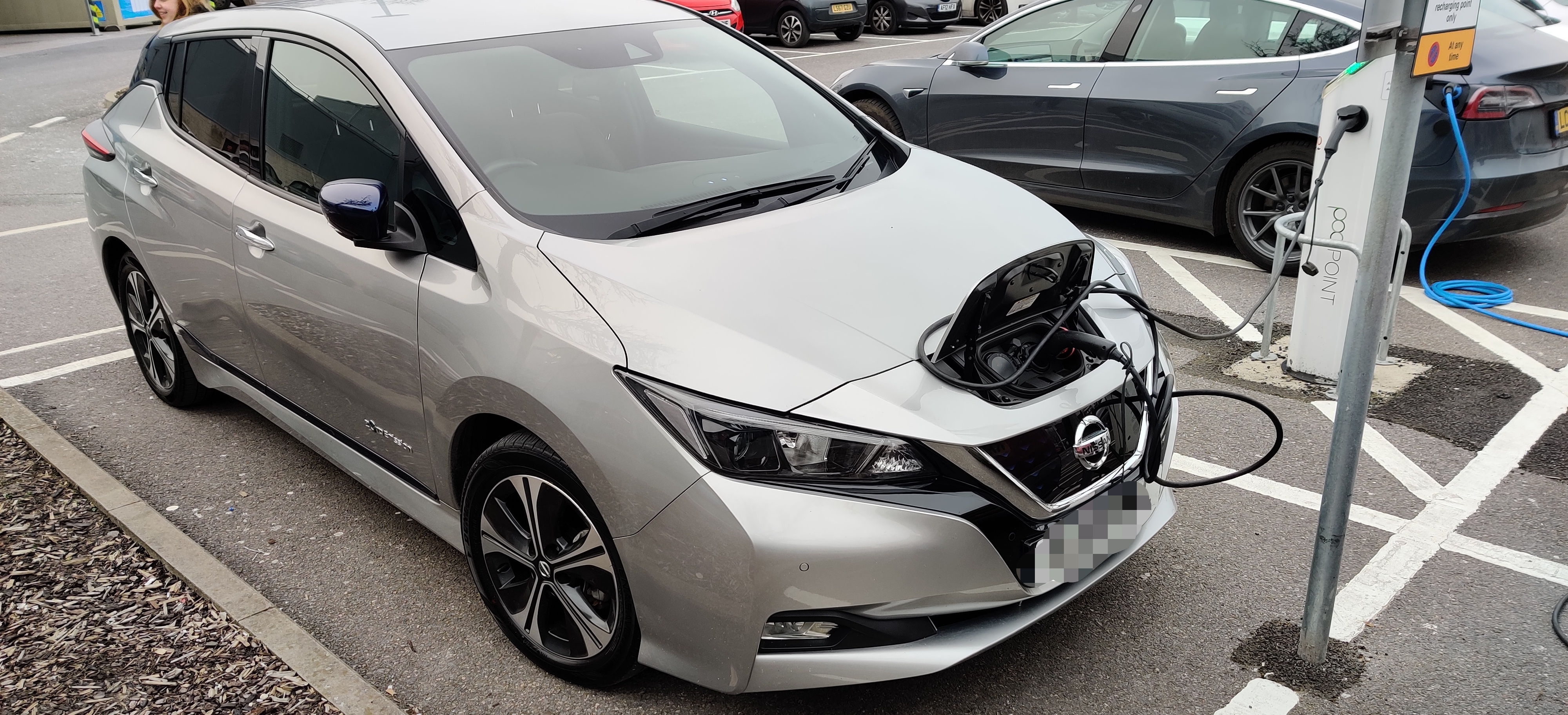Buying an electric car? What you need to know about public chargers
You don't need your own electric car charger, if you live in the right place

Recharging an electric car isn't the same as filling up a tank of gas. Wherever there are people, you can find gas stations. The same isn't true for EV charging points, and the general advice is to get a home charger installed so that you always have a place to plug in.
However, getting a home charger is not always possible. If you live in an apartment building, don't have off-street parking or suffer some other logistical issue, home chargers aren't an option. Thankfully, public chargers are there to fill the gap, though they're far from a perfect solution.
The main advantage of having a home charger isn't just so you have a reliable way to recharge your battery. It's also so you have a place to recharge slowly. Lithium batteries are pretty finicky things, and the faster you try to recharge them, the faster they end up degrading.
A DC rapid charger in a public place may be able to get you to 80% charge within an hour or two, but it's going to be hell on your battery in the long-term. That's why most EV advice is to avoid using them regularly. Recharging on long trips is OK, but daily rapid charges are not.
That complicates the issue of public charging and can easily make owning an EV feel like a no-win situation. But it's not all bad news.
Public-only charging is possible, if you're in the right place
The prospect of not knowing where to recharge isn't fun, especially when you know you need to plug into a charger that could take several hours to fully recharge. Do you sit there and wait? Or park, plug in and waltz off somewhere else in the interim?
These are all questions that need to be answered, and how feasible the options are all depends on your circumstances.
Get instant access to breaking news, the hottest reviews, great deals and helpful tips.
For instance, I live within walking distance of about a dozen EV charging stations, about half of which can recharge at comfortably slow 7kW speeds. If I need power in a hurry, the 50kW DC chargers are also readily available. So I can park and just walk home to do things that need doing while my car recharges.
It's not ideal, and if I could have a charger in my garage, I would. But thanks to some genius decision-making by builders in the early '80s, my garage doesn't have any mains electrical power. It's also in a dedicated block of garages about 65 feet from my house, so wiring it up to my electric meter isn't a feasible option.
It doesn't cost a fortune, either
The hidden benefit of charging at home is the cost. Once you actually have the charger installed, it costs pennies to recharge your car — with the added convenience of it being your own private charger. You'll save even more if you can take advantage of grants or other financial incentives that cut the initial cost of installation.
Public chargers are there to make money, and you're going to end up paying more to recharge. But it's still not particularly expensive.
I pay £0.25 ($0.35) per kWh at my nearest charger, so for a 40 kWh battery like mine, you'd be looking at £10 ($14) for a full recharge. That's almost double the £5.60 ($7.80) I'd be paying with a home charger, with which I'd have to pay £0.14 ($0.19) per kWh of power I consume.
There's a noticeable difference there. While it's not huge, it does add up over time and makes the home charger more economical than the public one. But my point here is that it's not overly expensive to recharge away from home, even if other chargers in my area typically cost five to 10 pence more per kWh.
For comparison my girlfriend’s car holds about 45 liters (11.8 gallons) of fuel and costs around £45 ($63) to completely fill. She gets double the distance out of it, around 300 miles to my Nissan Leaf’s 150, but she sends up paying a lot more. Though this comparison all depends on how much fuel is in your area, and British fuel is taxed pretty heavily.
The only thing you have to watch out for at public EV chargers are the hidden fees. Some chargers have an activation fee that's added onto your total. Others charge you for hanging around too long.
My local chargers give you four hours free parking, after which you have to pay £5 for every additional hour you stay plugged in. Meanwhile, the service-station charger I used to recharge halfway through my 250-mile round-trip to my brother's wedding charged £10 if you stayed longer than 90 minutes. That was a DC rapid charger, so if anyone was still there after 90 minutes, they definitely deserve to be fined for it.
Then again, some public chargers are completely free to use and have no visible restrictions. There have been several times where I've driven to a free charger (at the supermarket, no less) and found the same unattended delivery van plugged in.
But not everyone is like me
I have zero illusions about how privileged my position is. I live right on the edge of where the suburbs meet the countryside, around an hour outside of London. Last year, by pure chance, I moved to an area that's remarkably well-served by EV charging points.
In fact, I live very close to the regional headquarters of a company that specifically deals in EV chargers. Naturally, they have a pretty large number of charging stations that are open to the public.
Situations like mine are rare, and I'm lucky enough that there aren't a lot of people around, so competition for an EV charger is pretty low. My old residence was just five miles away, and not only was it next to impossible to park on the street there, but all the local EV chargers were in private car parks that charged you a fortune just to get in.
Owning an EV would have been impossible back then. Heck, owning a regular car that runs on gasoline wouldn't have been particularly easy.
I imagine a lot of people will be in similar circumstances with restricted options, especially if they live in cities where space is at a premium and there isn't much incentive to give EV drivers a spot to recharge their cars safely.
A problem with a fairly simple solution
That could easily be enough to put people off purchasing an EV, a less-than-ideal result. With many governments setting a timeline for the death of the internal-combustion engine, it's important that people start thinking towards the future.
The problem isn't a lack of charging infrastructure. The problem is that charging infrastructure is going to need to grow, adapt and ensure that there are convenient options for people who can't install home chargers. Fortunately, this shouldn't be a particularly difficult problem to solve.
Some naysayers might argue that there's a vicious circle of people not wanting to buy EVs because there's not enough charging infrastructure, which leads to a lack of charging infrastructure because only a handful of people own EVs.
Really, it's the opposite. EV adoption has been growing across the Western world. In the U.S. EV sales accounted for 1.9% of all car sales in 2020, and there are predictions that it could hit 2.5% this year. Meanwhile, 2020 saw EV sales rise by 185% in the U.K, despite new-car registrations falling to their lowest level in 30 years.
So in reality, we ought to see more of a positive feedback loop. As more EV owners hit the road, the more charging points are likely to pop up in response. After all, there are so many different companies offering electric-car charging solutions out there, and they're going to want to compete for all that incoming business.
But the solution is more than just more chargers. We also need different chargers that can be retroactively installed into existing street plans and that ideally wouldn't involve massive amounts of construction.
Thankfully, there are possible options out there. The most exciting is the prospect of converting street lights into EV charging stations. Not only are street lights pretty wide-spread, especially in urban areas, but they're typically within reach of the road. If a car can legally park nearby, there's no technological reason why these couldn't be installed on a larger scale.
As ever, it will all come down to cost, whether local governments cover the initial investment or charging companies do it themselves to recoup the cost from charging fees. Either way, that's going to be another obstacle to widespread availability of charging stations.
Bottom line
Convenient charging is one of those key issues EV owners have to face, whether it's the fact that charging takes significantly longer than filling up a tank of gas or the fact that off-street parking is a luxury for many car owners.
Yet prospective EV owners shouldn't be put off by the fact that a home charger is out of their reach. As I've found, it's possible to stick to public chargers and be happier for it. Yes, using public chargers costs more, and I don't have a daily commute to worry about, but it can be done.
Charging your EV out-of-home is all about circumstances and what sort of infrastructure is around you. You need to do your research before you make any commitment to buy an EV, including making sure you can keep your car recharged easily and safely.
Finding electric car chargers isn't particularly difficult. Plenty of services have sprung up over the years to help people locate chargers around the world. At the very least, you can search something as simple as "car chargers" on Google or Apple Maps and see what they can find around you. Just be aware that no single service shows everything you need to see, meaning you're going to need to do a bit of digging.
Most importantly, however, check out each public charging station for yourself. Make sure it's publicly accessible and check for obvious restrictions and cost information. If public chargers near your home are not usable or are far too expensive, you're better off holding off on that EV purchase until things change.
And things will change. It might just take a while, and there's no point making your life difficult in the meantime.
Read next: how to charge your electric car at home and how I drove an electric car to my brother's wedding and I barely made it.

Tom is the Tom's Guide's UK Phones Editor, tackling the latest smartphone news and vocally expressing his opinions about upcoming features or changes. It's long way from his days as editor of Gizmodo UK, when pretty much everything was on the table. He’s usually found trying to squeeze another giant Lego set onto the shelf, draining very large cups of coffee, or complaining about how terrible his Smart TV is.
